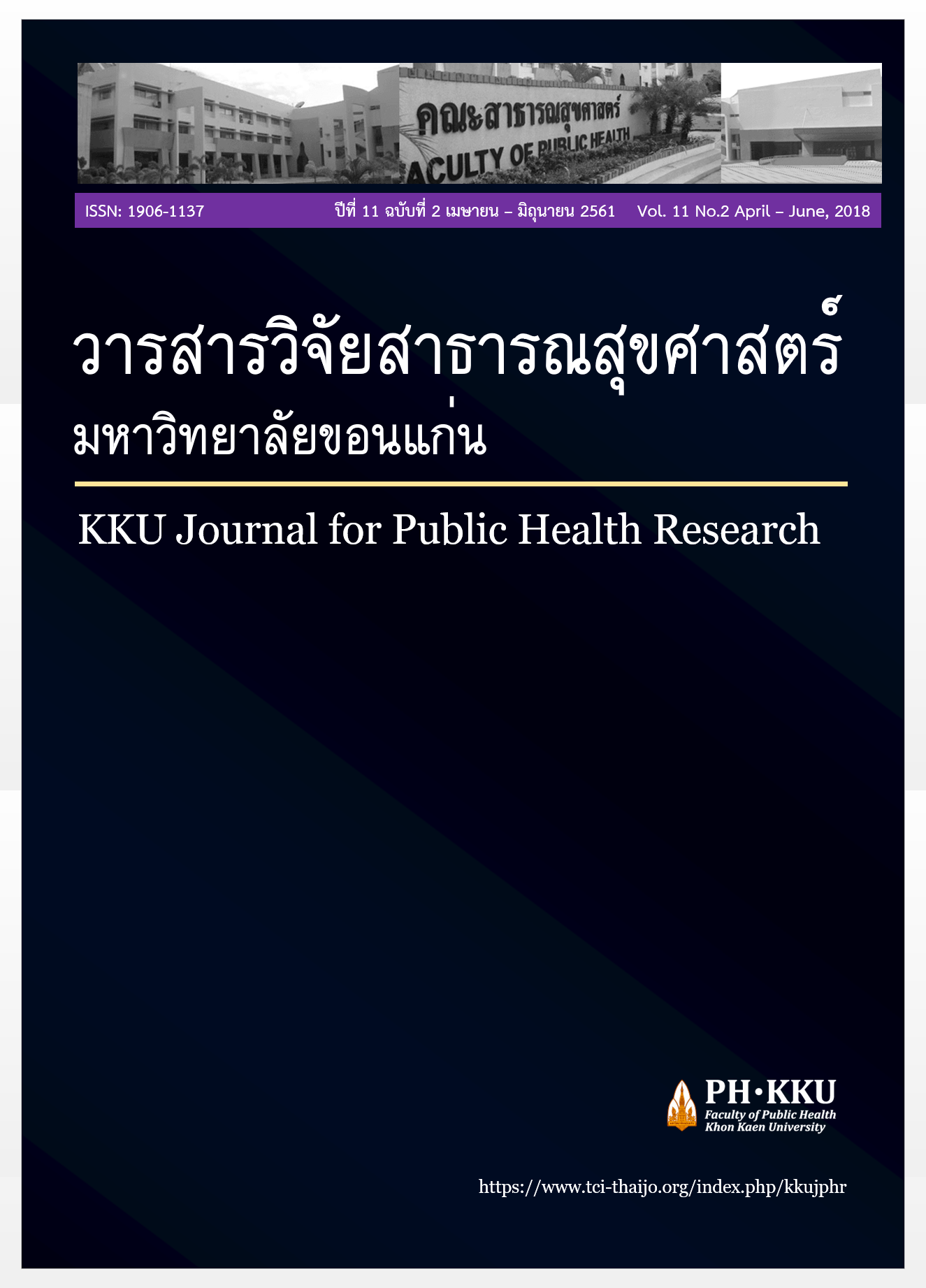Development of Early Childhood Dental Health Promotion Model by Integrated Participatory Network, Bua Yai Subdistrict, Namphong District, Khon Kaen Province, 2013-2016
Keywords:
oral health care, early childhood, integrated participatory, networkAbstract
Early childhood is very important for brain development if the preschool child is carefully nurtured from the date of the mother's pregnancy with nutrition and supportive environment. Fed with proper nutrition in child relates to oral health. This participatory action research (PAR) aimed to investigate situations and to develop model for promoting the oral health in preschool children in Bua Yai Subdistrict, Namphong District, Khon Kaen Province from July 2013 to December 2016. The participatory networks consisted of: 40 public health volunteers; 3 local administrative officials; 8 public health officials; 1 sub-district headman; 17 village leaders; 20 representatives for the parents; 6 teachers; 15 members of the sub-district committee for development of children; 5 school directors; and 5 sanitary teachers. Four hundred and forty-nine pairs of parents and children were recruited. Kemmis and McTaggart’s spiral model comprising four steps: plan, act, observe and reflect (PAOR) were performed. Firstly, 'PLAN' was done by related networks which developed program for the oral health promotion. Secondly, 'ACT' was achieved through the implementation as previously planned. Thirdly, 'OBSERVE' was observation of the activities performed. Then, qualitative data was analyzed and interpreted using content analysis, while quantitative data was analyzed using descriptive statistics including percentage, mean and standard deviation. Fourthly, 'REFLECT' aimed at the result reflection. Meetings were held among relevant networks for acknowledgement of the results and improvement of action plans in the cycles of the action research. The results were 1) network vision; 2) oral health development for the pre-school age children through integration process; 3) working groups; 4) pattern for the oral health promotion for the pre-school age children through integration process. Starting from service improvement for pregnant women and in well child clinics, visits were jointly provided by the public health officials and the public health volunteers for children at high risks, while parents were encouraged to tell tales. The targeted children's oral conditions and behavior were recorded. Teachers were trained and activity record forms were improved in child centers where, at the same time, were developed following the committee's result reflection. Besides, libraries of tales were established and boards were posted with information which encouraged all integrated activities, spanning from eating, hugging, playing, brushing teeth, telling tales to cars for children, for children. Oral protective services were enhanced in the child centers. Tooth brushing contests were arranged, while tooth brushing workshops were held for the parents and public health volunteers. With regard to the results, cavity free in children aged three years old was increased from year 2012 to 2016 (from 55.61% to 61.61%, 79.88% 70.09% and 71.81% respectively). Mean decayed teeth showed decreasing trend (from 4.03 to 3.85, 3.41, 3.16 and 2.8 teeth per child, respectively). Besides, the child centers earned the quality standard and sub-district administrative organizations also continuously supported leading to the public policy-so-called “Tambon Ngan Boon Plod Nam Adlom,” or carbonated beverage-free sub districts. In addition, the oral health development plan was extended to all age ranges.



